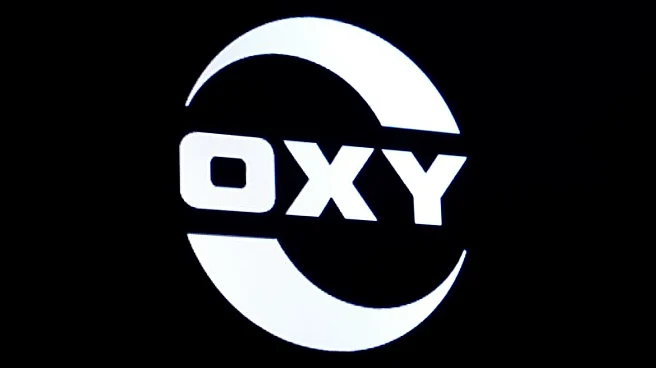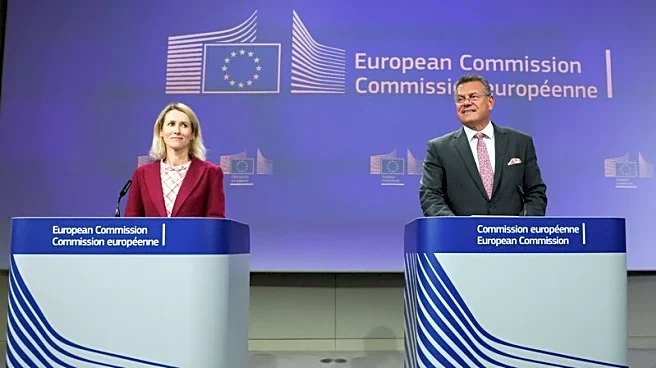What's Happening?
U.S. liquefied natural gas (LNG) exports hit a record high in September, reaching 9.4 million metric tons, surpassing the previous record of 9.3 million metric tons in August. This increase was driven by robust sales to Europe and Asia, despite unplanned shutdowns at Cheniere Energy's Sabine Pass plant in Texas and a planned outage at Berkshire Hathaway's Cove Point plant. Europe remains the primary destination for U.S. LNG exports, receiving two-thirds of the total at 6.22 million metric tons. Meanwhile, exports to Asia accounted for just over 17% of the total, with 1.63 million metric tons. The remaining exports were distributed to Latin America and North Africa. The European benchmark Dutch Title Transfer Facility saw gas prices at $11.13 per million British thermal units, while the Japan Korea Marker benchmark in Asia was at $11.32, indicating little incentive for U.S. exporters to shift focus from Asia to Europe.
Why It's Important?
The record high in U.S. LNG exports underscores the country's pivotal role in the global energy market, particularly as Europe seeks alternatives to Russian gas amid geopolitical tensions. The strong demand from Europe highlights the continent's reliance on U.S. LNG to meet its energy needs, especially as winter approaches. This trend could bolster U.S. economic interests by increasing trade revenues and strengthening energy ties with European nations. However, the reliance on U.S. LNG also reflects broader energy security concerns, as countries navigate supply disruptions and price volatility. The situation may influence future energy policies and investment decisions, as stakeholders assess the balance between energy independence and international cooperation.
What's Next?
As the demand for LNG continues to rise, U.S. exporters may explore expanding capacity to meet global needs, potentially leading to increased investments in infrastructure and technology. European countries might intensify efforts to secure long-term LNG contracts to stabilize supply and prices. Additionally, geopolitical developments could impact trade dynamics, with potential shifts in alliances and energy strategies. Stakeholders, including governments and energy companies, will likely monitor market trends and adjust strategies to optimize benefits and mitigate risks associated with fluctuating energy prices and supply chain challenges.
Beyond the Headlines
The surge in U.S. LNG exports may have environmental implications, as increased production and transportation of LNG contribute to greenhouse gas emissions. This development could spark debates on balancing economic growth with environmental sustainability, prompting discussions on cleaner energy alternatives and carbon reduction strategies. Furthermore, the geopolitical aspect of energy trade may influence diplomatic relations, as countries leverage energy resources for strategic advantage, potentially affecting global stability and cooperation.












